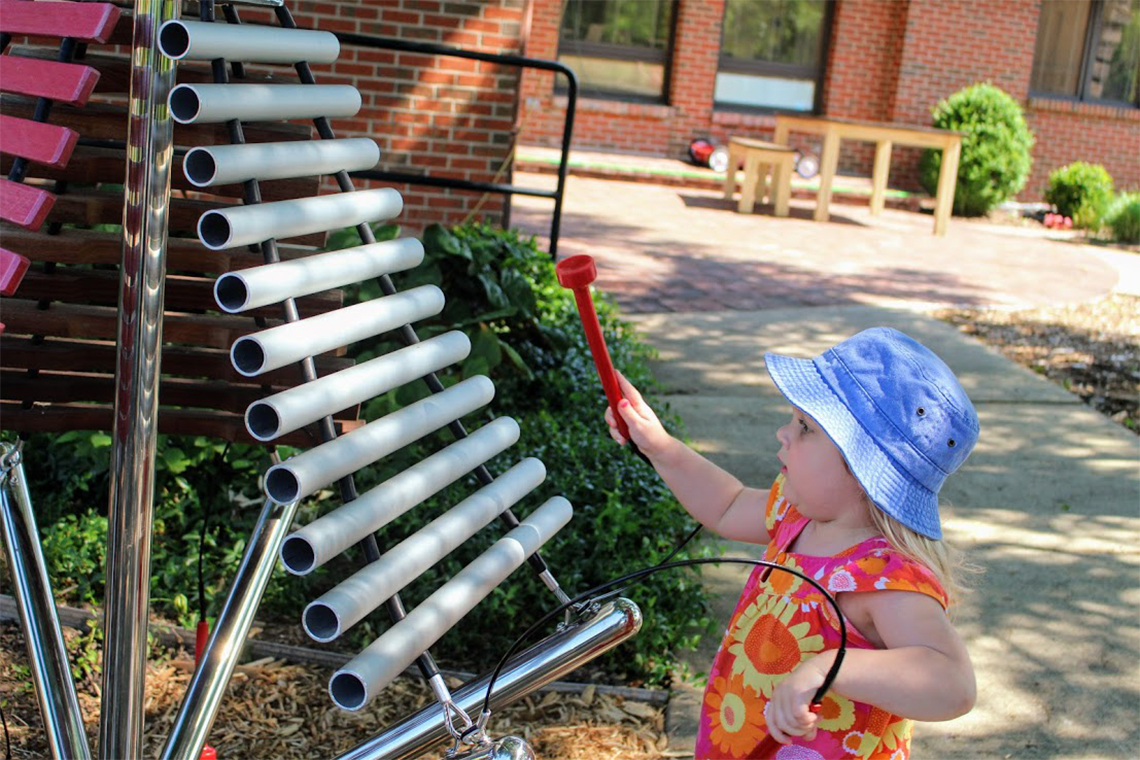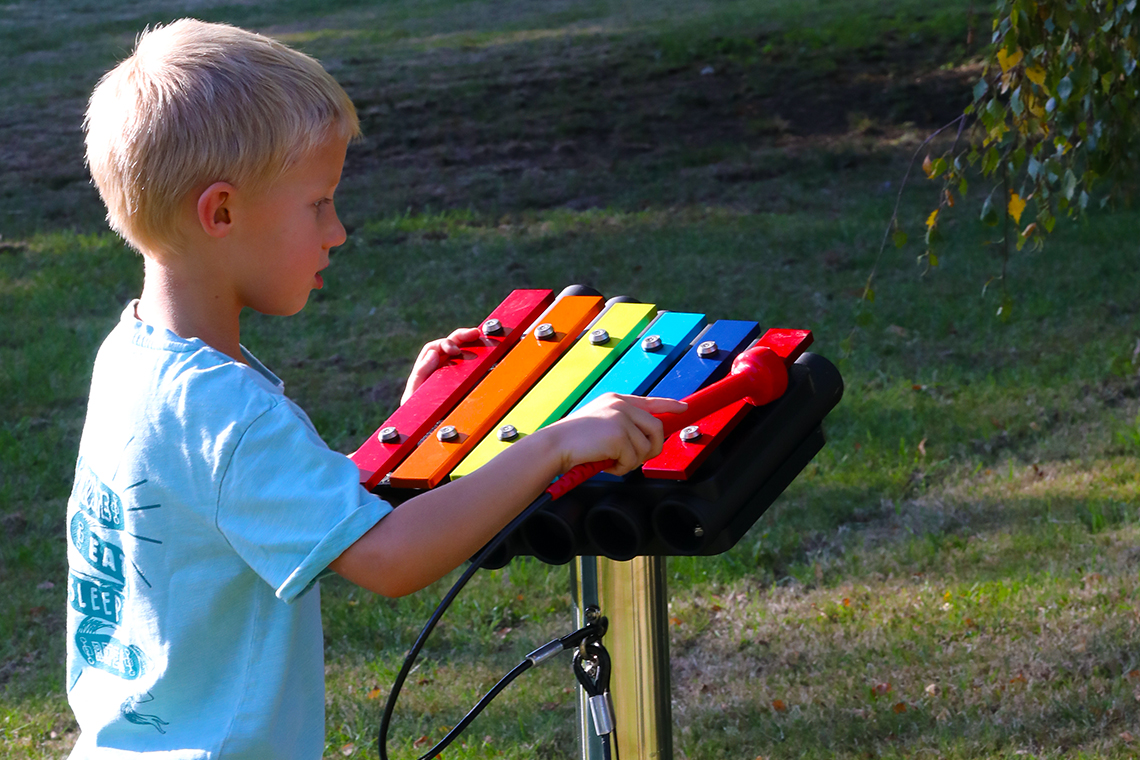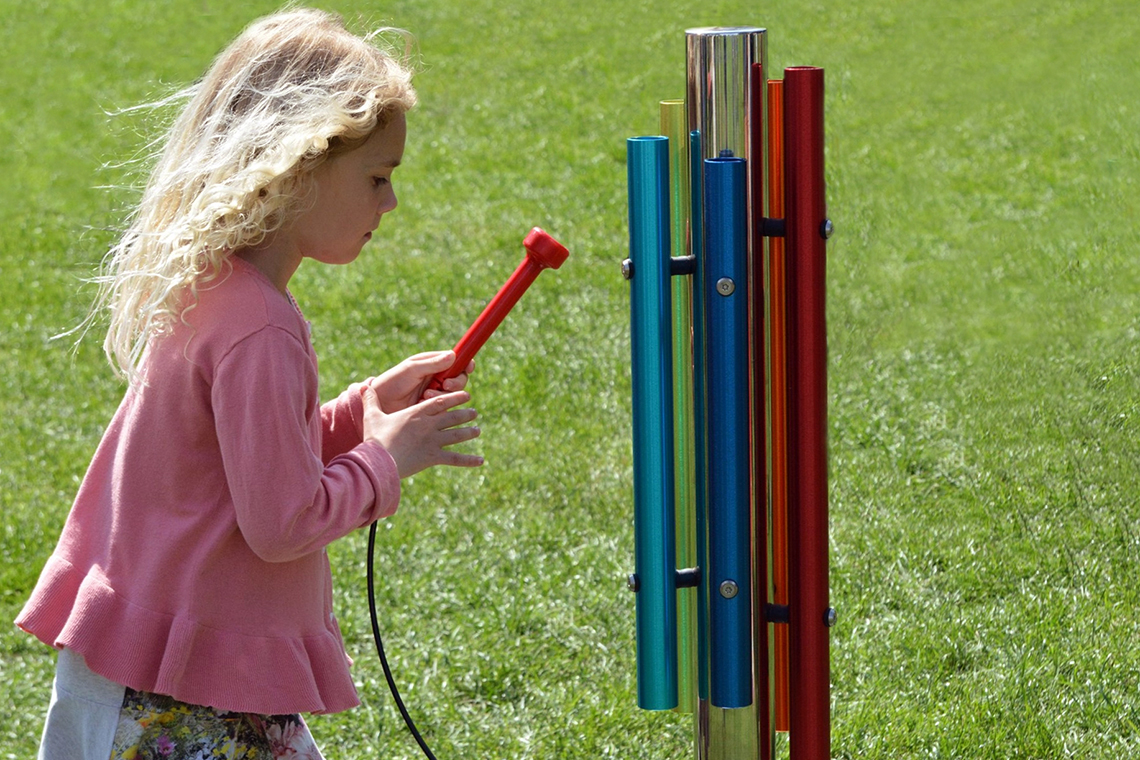The Pentatonic Scale For Early Years
Music makes a unique contribution to playful learning with fun interactive music activities encouraging infants to develop new skills in language, motor abilities, and cognitive skills. Approached in the right way, music time should encourage children to take risks and make mistakes: quietly promoting self-confidence, spontaneity, creativity, and originality.
German composer Carl Orff developed a way of tapping into children's natural sense of rhythm and melody. Orff, who died in 1982, co-founded the Guenther School for gymnastics, music, and dance in Munich, Germany, and developed a simple way of teaching music to youngsters using percussion instruments. His approach begins with the premise that every child is innately musical and naturally loves to play, sing, and dance. He tuned percussive instruments to the pentatonic scale and encouraged children to play them ensemble.
Children learn through doing, exploring, and improvising. They have a natural instinct to create their own melodies and explore their imaginations. These instincts are directed into learning music by hearing and making music first, then reading and writing it later, in the same way that we all learned our own language. Original Orff melody instruments include pentatonic wooden xylophones and metal glockenspiels that offer good sound immediately.

The Magical Pentatonic Scale
The pentatonic scale is excellent for improvised ensembles; you can just play around and never hit anything inordinately dissonant. The word pentatonic comes from the Greek word ‘Pente’ meaning five (think pentagon or pentathlon) and tonic meaning tone; put them together and you get five tones or notes. Simply put, the pentatonic scale consists of five notes within one octave: that's why it is also sometimes referred to as a five-tone scale or five-note scale. The notes in the pentatonic scale naturally sound good in any order because there are no dissonant intervals between any of them.
These scales are developed with five notes and exist as two common types: major and minor pentatonic scales. The major pentatonic scale is more commonly used and is denoted as the primary pentatonic scale. The major pentatonic scale is the same as the major scale minus the fourth and seventh notes. So you can get C major pentatonic by starting with the C major scale, and removing F and B. Removing the F-B tri-tone means there are no wrong or dissonant notes in C major pentatonic. Everything you play will sound interesting and fresh, just perfect for beginners and young learners.

Safe Musical Haven
You can use pentatonic tuned musical instruments as a kind of safe musical haven. The technique is not a problem, given the simplicity of the instruments. Dissonance is not a problem, given the pentatonic scale. When one experiences the simplicity of making pleasing melodies and harmonies on the pentatonic scale, making music suddenly becomes achievable and exciting.
Music in the early years supports children's all round development and helps to shape their skills in concentration, memory, and listening. To aid this physical and cognitive development and lay a strong foundation in aural and rhythmic skills, every child must be given the opportunity to discover their musicality. With a little imagination, music can be incorporated into numerous settings throughout the day. Creating areas for music and sound exploration inside and out will help integrate music into children's everyday experiences.

Integrate Music into The Everyday Experience of Children
The introduction of an outdoor musical garden or outdoor 'soundscape' will excite and inspire children musically whilst enabling them to enjoy the obvious benefits that come from spending time in the natural environment: exploring new sounds whilst enjoying the fresh air and sunshine (well, fresh air at least!). An outdoor musical playground will provide young children with opportunities for early interaction and positive experiences with music. A facility where children can explore, create, and develop their own musical ideas and sounds can maximize the musical potential of a child during their most rapid developmental period, while encouraging them to discover the joy and empowerment of music-making.

The traditional emphasis in education on getting the music right has led generations of adults to claim they can't sing or play an instrument and lack confidence in their musical abilities. I speak from experience: I hated music lessons at school, and yet I love music. In a free-play environment, where there are no wrong notes, the experience can lead to a life-long love of music and music-making. Creativity, imagination, and discovery should be facilitated and strongly encouraged in music education. Through active learning—hands-on, participative, and interactive—children's musical self-expression, self-confidence, and self-esteem will grow and grow.
